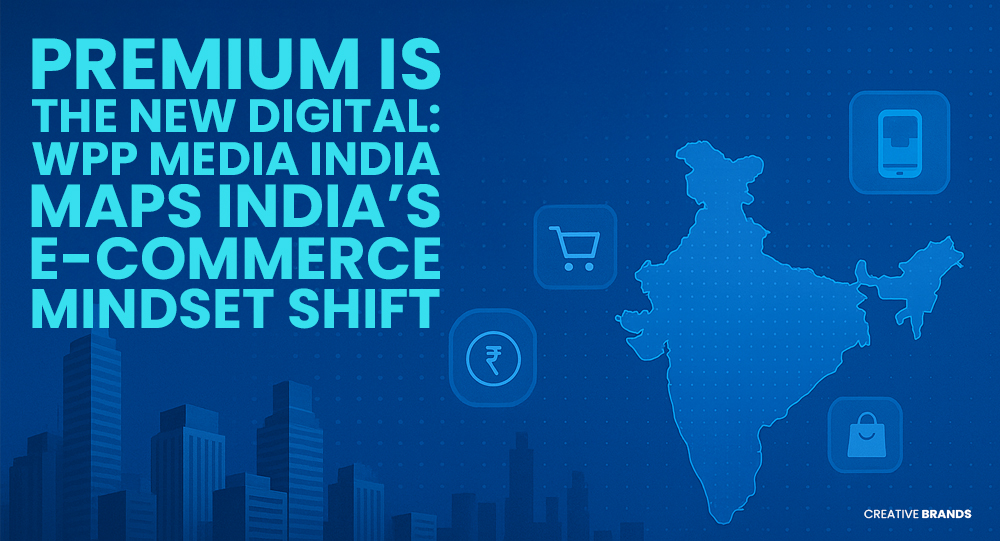WPP Media India’s new playbook reveals that India’s e-commerce is shifting from price-driven to aspiration-led consumption. Premiumization is going mainstream across Bharat, powered by credit access, AI-driven platforms and evolving consumer expectations. Brands are urged to move beyond discounts and design identity-rich, experience-led offerings to win the next wave of digital loyalty.

WPP Media India has released a provocative new playbook that argues Indian e-commerce is entering a decisive new phase — one where aspiration, experience and identity are beginning to outweigh deals, discounts and digital accessibility. Titled Beyond Price Tags: The Power of Premiumization in India’s E-commerce Boom, the framework positions premiumization not as a luxury trend but as the future default mindset of India’s digital consumer — and perhaps the greatest opportunity for brands in the coming decade.
The playbook suggests that online shopping in India has fully outgrown its discount-era adolescence. From EMI-driven credit access and rapid hyperlocal delivery to influencer-led aspirational storytelling, everything in the ecosystem is now wired to make premium products feel both desirable and achievable — not just for metro elites but for ambitious consumers in Tier-II, Tier-III and emerging Bharat markets. What was once an urban trend has quietly become a digital democratization of aspiration.
The report identifies five foundational behavioural shifts. First, the demand for premium is no longer urban or elite — India’s credit innovation, social commerce channels and maturing delivery networks are enabling consumers across Bharat to upgrade without hesitation. Second, what people increasingly value is the feeling a brand gives them — personalization, sustainability, emotional storytelling and self-expression are beginning to matter more than cost. Third, platforms themselves are accelerating this shift, with AI-led recommendations, loyalty ecosystems, social-led discovery and quick commerce reconceptualizing how aspiration is activated. Fourth, every category from fashion and beauty to FMCG and consumer durables is seeing a clear trade-up pattern, with consumers preferring better design, richer features and emotional connection over functional utility. And finally, even mass-market brands are realigning — launching masstige sub-brands and premium line extensions to avoid being perceived as “cheap” in a country that is now signalling ambition as a lifestyle.
To ensure this transition is not just observed but capitalized on, WPP Media India has gone beyond trend-mapping and introduced four proprietary strategic models — FLASH, VISTA, PRIME and RISE — that serve as operational blueprints for discoverability, curation, experience design and loyalty economics. These are designed to help brands engineer premium value deliberately, not accidentally — across cohorts, platforms and missions.
Ashwin Padmanabhan, COO of WPP Media South Asia, calls this shift “more than a change in price points — it is a cultural pivot in how consumers assign value, status and meaning to the brands they engage with.” Sairam Ranganathan, Head of Commerce at WPP Media India, adds that the future of Indian e-commerce is “not just digital — it is decisively premium,” emphasizing that the brands that move first will own consumer trust and cultural relevance before the market fully matures.
The playbook concludes with a clear assertion — premiumization is not a temporary trend, it is the new psychology of digital India. Today’s consumers are not simply shopping for products, they are choosing reflections of their identity, aspirations and worldview. The ones who trade up are not just paying more, they are feeling more. And in a market where prestige now has more power than price, brands that understand this emotional economics will lead not just the marketplace, but the meaning economy.
Discover more from Creative Brands
Subscribe to get the latest posts sent to your email.





